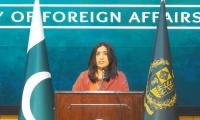COP28, held late last year, included a global climate action summit attended by 154 heads of state and government, heads of UN agencies, major regional networks, business organizations, and civil society leaders, who all reiterated their support for efforts to tackle the climate conundrum.
Decisions taken during COP28 include the operationalization of the Loss and Damage Fund and the UAE Consensus. Other interesting takeaways from the summit include the reports by the World Resources Institute (WRI) and other organizations.
In 2015, the Paris Agreement recognized the imperative of enhanced adaptive capacity, strengthened resilience, and reduced vulnerability to climate change.But it had not prescribed a framework for defining the goal on adaptation.
At COP28, a set of time-bound targets for specific themes and sectors – such as reduction in climate-induced scarcity of water, achieving climate resilience in food and agricultural production, and resilience against the adverse health impacts of climate change – were agreed upon.
Developing countries were disappointed that agreements could not be reached on financial support for implementation. Shortly before COP28, the UNEP issued its annual assessment of climate action which highlighted that developing countries need around $387 billion a year to prepare and deal with the impacts of climate change.
It also pointed out that the adaptation finance needed to help developing countries prepare and cope with the consequences of climate change was 10-18 times more than international finance flows. It stated: “There is a gap of $360 billion a year. Between $215 billion and $387 billion a year is needed during this decade. But flows have actually dropped 15-21 per cent in 2021.”
COP28 established a two-year work programme to develop indicators for measuring and assessing progress towards the overarching targets of adaptation goal.
Evidently COP29, to be held in Azerbaijan this year, will have to deal with the perennially thorny questions related to climate finance, including the adoption of a new finance goal – the new collective quantified goal (NCQG). The goal will replace the $100 billion annual fund target set in 2009 and encourage developed countries to raise around $5.8-5.9 trillion until 2030 to help developing countries meet their climate finance needs.
At COP28, additional $3.5 billion in new pledges were announced to the second replenishment of the Green Climate Fund.The second replenishment now totals $12.8 billion. The challenge will be to turn the pledges into actual disbursements to developing countries for impactful climate actions.
In 2024, three technical expert dialogues will define the key elements of the NCQG such as the amounts of the goal, the timeline of fundable activities, and how to measure progress. Negotiators will also develop the framework for a draft negotiation text.
The Global Stocktake has also underscored the importance of reforming the multilateral financial architecture, including multilateral development banks, institutional investors and other financial actors. In fact, the heads of the IMF and the World Bank have initiated discussions on how to better deploy their resources for effective climate action.
The UAE Consensus calls on countries to submit new NDCs well before COP30.The revised commitments should update the 2030 targets and offer new targets for 2035. The COP28 decision underlines that the new NDCs have to be more ambitious, in line with the IPCC finding that achieving the objective of limiting increase in temperature to 1.5 degrees C compared to pre-industrial levels requires reducing GHG emissions by 60 per cent below the 2019 levels.
The COP28 decision states that the revised 2030 emission reduction targets should upscale current actions to reduce emissions, as well as include plans for adaptation, just transition efforts, and compensation for loss and damage. NDCs should also reflect multi-sector transformations, including clean energy, nature conservation, road transport, and more.
Governments should initiate the preparation of their next versions of NDCs. The UN system will hold a series of global and regional workshops and capacity building sessions to help them. The UN chief will hold a special event for countries to submit their new commitments.
COP28 came up with a new political contrivance to promote collaboration on climate action: the presidencies of COPs 28, 29, and 30 will jointly promote a ‘roadmap to 1.5 degrees C’, including preparation of more ambitious NDCs and securing funds for implementing them.
In response to the growing worldwide concerns over the adverse effects of climate change on global food security, 159 nations, covering 80 per cent of the world’s land, have signed the COP28 Declaration on Sustainable Agriculture, Resilient Food Systems, and Climate Action, committing to integrate food and food systems into their NDCs by 2025.
The Alliance of Champions for Food Systems Transformation (ACF) was launched in Dubai. It pledges a whole-of-government approach to promote faster action on the UAE Consensus. The FAO has also released a roadmap on how to combat climate change while also ending hunger.
Countries must now incorporate food and food systems into their next round of NDCs and report real progress at the next two COPs.
During COP28, more than 500 city mayors, governors, and other sun national leaders attended the first-of-its-kind ‘Local Climate Action Summit’ which called for an enhanced role for cities in climate action, including through NDCs and financing. UN-Habitat also hosted the second ministerial meeting on urbanization and climate change.
The final COP28 agreement highlights the widespread understanding of cities as critical climate change battlegrounds and partners for action - a fitting recognition since 70 per cent of carbon emissions originate in urban areas.
COP28 saw a number of initiatives for addressing methane pollution, a greenhouse gas 20 times more potent than carbon dioxide. Governments, companies and philanthropists announce $1 billion in new grants for projects aimed at cutting methane in the oil and gas, waste and agriculture sectors.
The UAE Consensus also calls on all countries to speed up their reductions of non-CO2 emissions, including methane, and encourages them to include all greenhouse gases in their next NDCs.
The success of the decisions adopted at COP28 as well as the initiatives launched outside the negotiations depends on the ability and will of governments and non-state stakeholders to implement the very ambitious agreements.
NDCs serve as a framework for action. Finance, science and technology, and skilled human resources will be needed to translate the COP28 outcomes into meaningful actions. Efforts of developing countries must be supported by adequate external support at the bilateral, regional, and multilateral levels.
Concluded
The writer is a retired ambassador and former UN assistant secretary-general.
Chinese President Xi Jinping and US President Joe Biden meet at the G20 leaders’ summit in Nusa Dua. — AFP/FileA...
Over the past few years, we have witnessed a complex and dynamic interplay between soft power and nation branding that...
A representational image showing the emission of gases by burning fossil fuels in an oil exploration facility. —...
Ukrainian soldiers ride on an armored vehicle in Novostepanivka, Kharkiv region on September 19, 2022. — AFPRising...
A representational image showing a man holding national flag as he walks along a street in Islamabad. — AFP/FileThe...
River Ravi is estimated to contribute more than 80 per cent of the recharge the Lahore aquifer requires, according to...







